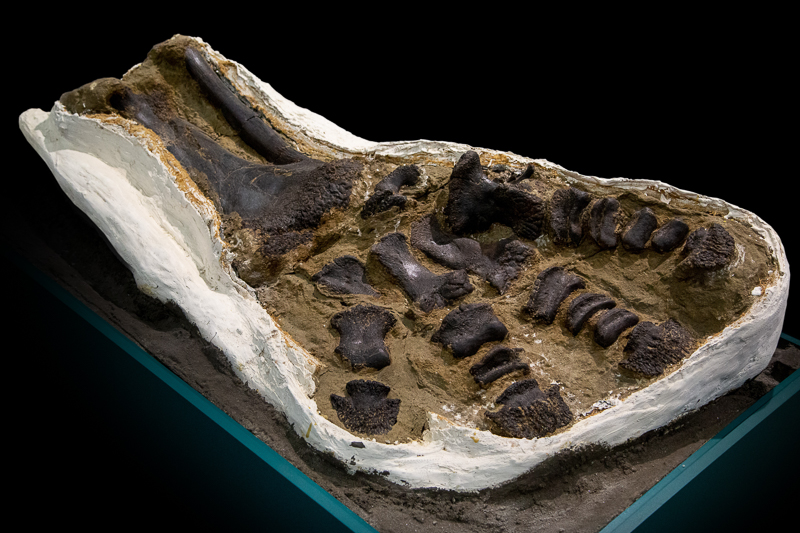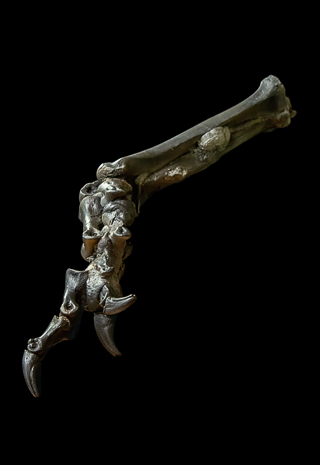Dueling Dinosaurs Exhibit Update
For immediate release ‐ March 29, 2021
Contact: Jon Pishney, 919.707.8083. Images available upon request
Museum guests will get their first look at the Dueling Dinosaurs beginning Tuesday, March 30.
On the second floor of the Museum’s Nature Exploration Center (NEC), an enormous foot belonging to our Triceratops will be displayed as fossil in matrix, while a foot of the tyrannosaur will be displayed in replica.
The selected portions of the Dueling Dinosaurs will be the public’s first in-person experience of the incredible exhibit. Guests will be able to enjoy a 360-degree walk-around of the fossils, allowing observation on all sides.
 The Triceratops foot fossil in matrix. Photo: K. Swain/NCMNS.
The Triceratops foot fossil in matrix. Photo: K. Swain/NCMNS.
The exhibit is also equipped with fascinating facts about the anatomy of the specimen and the environment the dinosaurs lived in. (Preview below!)
Fast Feet Facts

A replica of the tyrannosaur’s foot, in process.
Photo: K. Swain/NCMNS.
- Triceratops likely had thick, fleshy footpads, similar to a hippopotamus or elephant.
- Triceratops walked on its toes (digitigrade), compared to humans, who walk on their soles (plantigrade).
- Tyrannosaur feet were similar to the feet of an emu (Dromaius novaehollandiae).
- Like Triceratops, tyrannosaurs also walked on their toes and had three functional toes, like most of their living relatives (birds) do today.
Eric Lund, the SECU DinoLab Manager, shared that he hopes guests, “learn how these iconic dinosaurs moved through their environments and how they share fascinating similarities with living animals today.”
Because the Dueling Dinosaurs fossils are so well preserved and articulated and the bones were found in life position, they will provide unique insights into the soft-tissue anatomy of these two dinosaurs. Guests will be able to gain insight into their biology and their movement.
Beyond this, the exhibit will allow guests to make comparisons to their own feet!
Edited January 20, 2023

